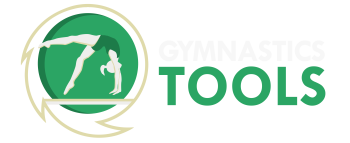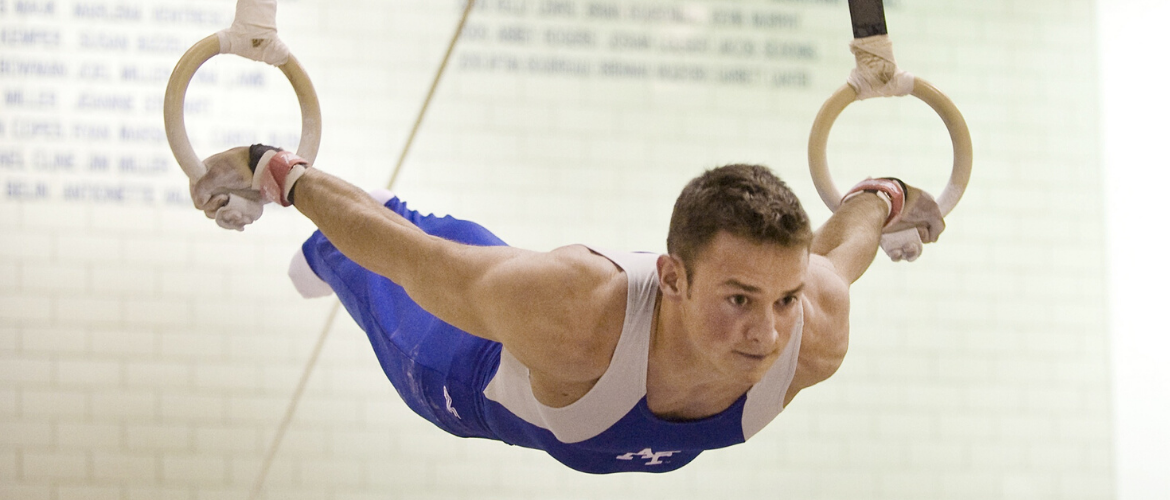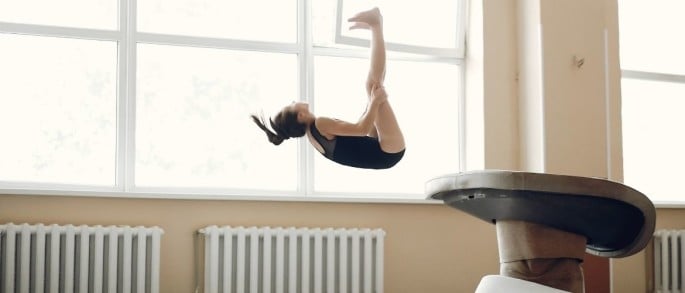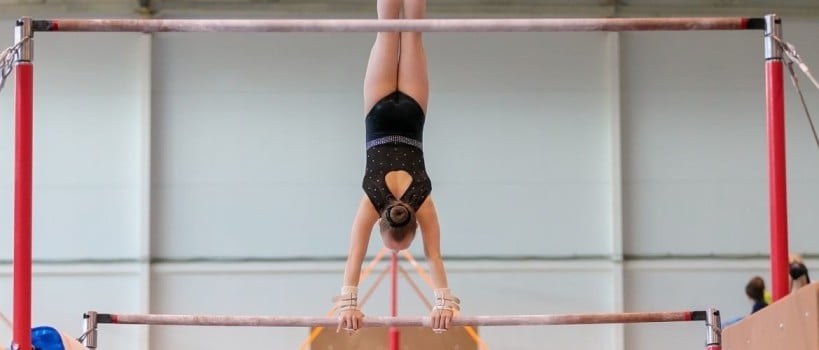Terms for body tightening. “Tighten your legs”, “tighten your core”, tighten, tighten, tighten. How often isn’t a gymnast told these things during practice? Tightening is necessary to “block” certain body parts. By blocking certain joints, you can create “body tightness”. This is necessary for, amongst others, rebounds, stability, safety, reactive strength and body shaping in gymnastics.
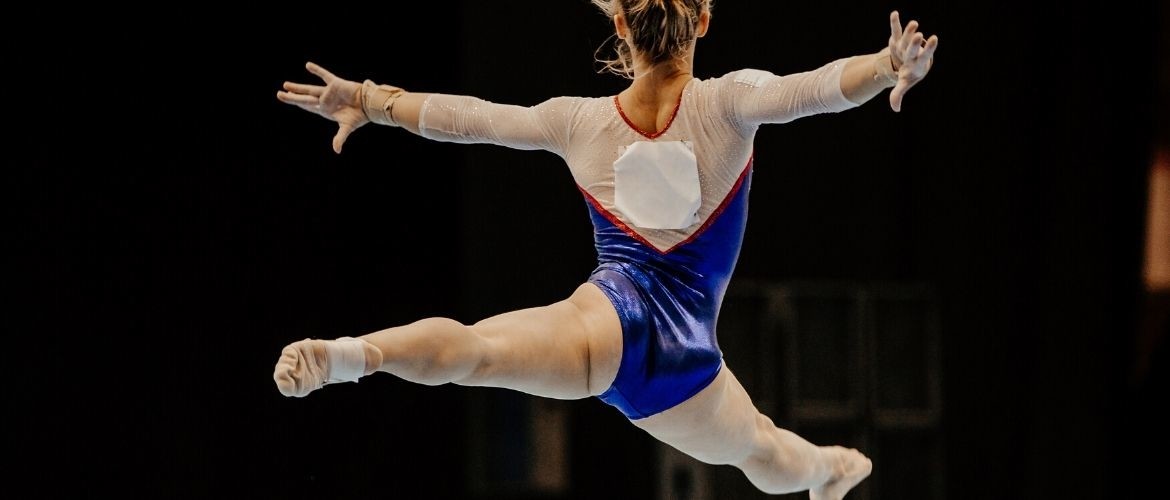
Body tightness in split leap (gymnastics)
Different kinds of body tightness in gymnastics
Rebounds: think about the height in jumps and series on floor
Stability: think about a landing after a Tsukahara on vault. This should be executed without wobbles or steps.
Safety: think about how a tensed body provides protection against the impact stress during a skill. You don’t want one joint absorbing all the impact stress. By tightening your body, the impact is divided throughout your body.
Reactive strength: think about a snap down or block of the shoulders on vault. You want this to happen quickly and without losing energy. When your body is in a tensed position, you are able to use the most energy in your movement.
Body shaping: think about how tension makes it possible for your body to stay in straight lines. These are necessary for the execution of gymnastics skills, like a handstand for example. A handstand needs to be as straight as possible, not as bent as a banana. To be able to do a straight handstand, you need to tighten your body.
Incorporate tightening exercises in your practices to help your gymnasts understand how to tighten their bodies.
How to learn how to tighten
Experience being straight, hollow and arched
It’s important for a gymnast to know how to be straight, hollow and arched. Some elements consist of a straight position, like a handstand, while others need a hollow position like a somersault. For a gymnast, it’s also good to know how she can correct her shape. If she always does an “arched” handstand, she can correct her shape faster if she knows how to be “straight” in an element.
Leg, hip and shoulder tension
Learning to tighten leg, hip or shoulder intentionally is essential to protect your joints. Leg tightening also includes tight knees, ankles, toes and keeping your legs together. Tensed hips can block the pelvic which is applied in the hollow or arched position. Tension in the shoulders is necessary to block the shoulders. This can be seen in an extended plank.
Learn to block
When blocking, you make sure your body stays tensed when the body receives “interruptions”. An example is staying in a handstand while being pushed.
Apply body tightening
Eventually you want to use body tightening to tightly and cleanly execute gymnastics skills.
Gymnastics Case study
Mila finds it difficult to keep her legs together during a front handspring on vault. Her coach notices that she has the same difficulty when doing a front handspring on floor and her handstand on beam doesn’t go well either.
In this case, it would be good practice for Mila to become aware of her legs closing as part of tightening her body. During warm-up, Mila could sit in pike position or do a hollow hold on floor while squeezing an object between her legs. During vault practice, she could get a separate exercise like lifting her legs with an object between her ankles while laying on her belly. These exercises will help her become aware of how to keep her legs closed and will contribute to increasing the strength in her legs so that she keeps them closed.
In conclusion, body tightening is essential to execute gymnastics skills safely and correctly. Try to always make this a part of your gymnastics training in for example your warm-up or as a preparatory exercise for an element.
Body tightening exercises
Click on the icon on the top right to scroll between all exercises. There are more than 40 drills & exercises!
Are you curious for more? Look at our platform and Youtube Channel for more videos.
